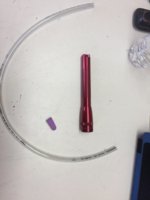Endee
XS650 Enthusiast
Hi all, couple quick questions hopefully.
I found an air leak on my right side cylinder where the rubber boot attaches to the engine. I took the boot off to inspect and it is in good shape. I noticed what looked like some dried rtv or sealant on the gasket. I did not remove the gasket between the engine and the boot.
What's the best way to fix the air leak? New gasket? Or is there a hi temp rtv I can use to help from a good seal?
Also, when checking for air leaks is it better to use starter fluid or wd40? Will the starter fluid damage rubber or seals?
I found an air leak on my right side cylinder where the rubber boot attaches to the engine. I took the boot off to inspect and it is in good shape. I noticed what looked like some dried rtv or sealant on the gasket. I did not remove the gasket between the engine and the boot.
What's the best way to fix the air leak? New gasket? Or is there a hi temp rtv I can use to help from a good seal?
Also, when checking for air leaks is it better to use starter fluid or wd40? Will the starter fluid damage rubber or seals?


